Golf’s Most Unusual Rounds
Golf’s Most Unusual Rounds - Highs, lows, great comebacks and bizarre finishes, golf has witnessed some amazing performances over the years
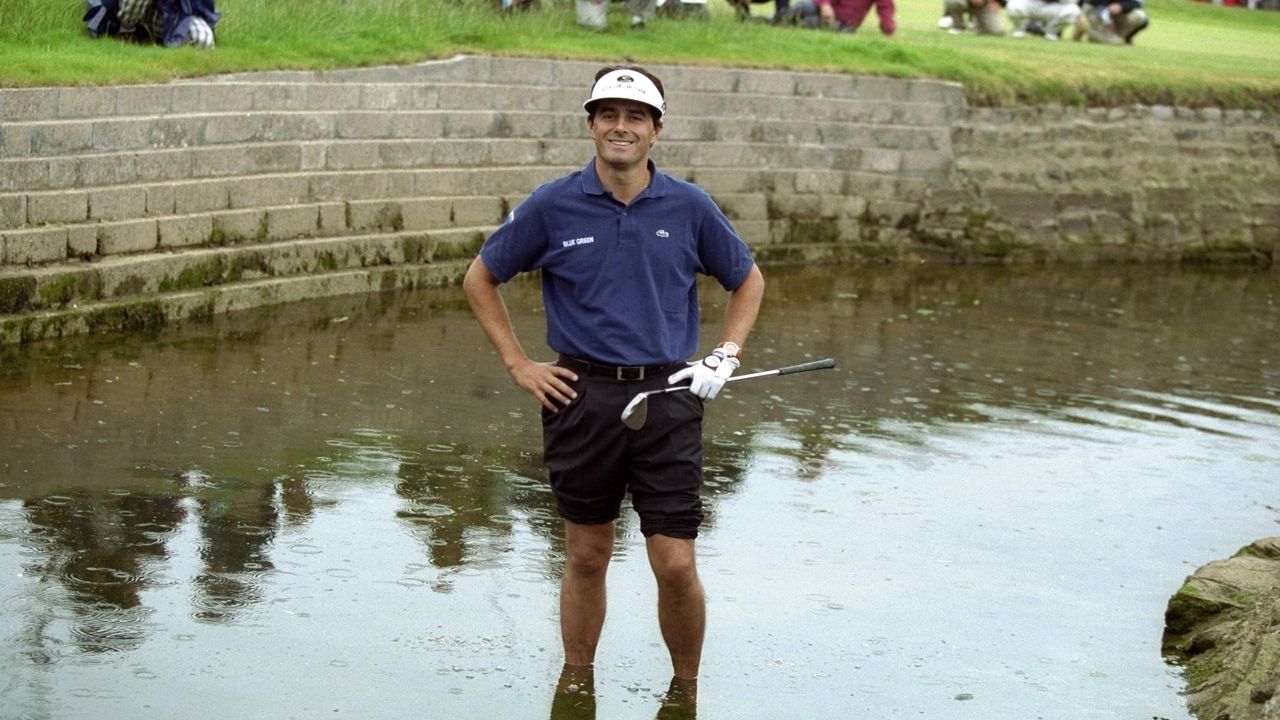

Golf is a game of fine margins, countless possible scenarios and outcomes. As such it’s one of the most unpredictable sports there is. One wayward strike or one stroke of genius can totally change a round or competition. Players can come back from seemingly impossible situations, become locked in exhausting battles and fire astonishing scores, both low and high.
Over the years there have been many remarkable and unlikely rounds played by professionals and amateurs, some superb, others disastrous. Who could have predicted Al Geiberger’s 59 at Colonial in 1977 or Tiger Woods, going for the “Grand Slam” and shooting 81 in the third round of The Open at Muirfield in 2002?
It’s the uncertainty that makes golf so captivating and so challenging, both physically and mentally. Almost, if not quite, anything can happen out on the links. Below, we consider some of the most unusual and improbable rounds in the history of competitive golf: from epic playoffs to monumental comebacks and from blistering rounds of brilliance to astonishing displays of folly.
A Testing Playoff
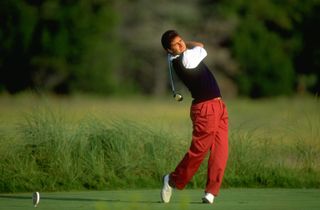
A matchplay marathon for Olly
Played the week after The Open Championship at Royal Troon, won by Mark Calcavecchia, the 1989 KLM Dutch Open was contested at Kennemer Golf and Country Club. 23-year-old José María Olazábal came into the event as one of the favourites. He’d already won that season and three-times had been a runner-up. Having fallen out of contention at Troon with a disappointing final round 75, he was keen to make amends.
With a round to go it seemed he would do just that, three shots clear of the field. But for a second week running, he struggled over the closing 18. He posted a 76 and was caught by Ronan Rafferty and Roger Chapman.
In lashing rain and high winds, the trio faced a sudden-death playoff. Playing a loop of the 16th, 17th and 18th, Chapman fell at the first extra hole. Olazábal and Rafferty couldn’t be separated so easily though. It wasn’t until the ninth extra hole (at 8.30pm) that the Spaniard finally saw off his rival. The conditions were so testing that he scored 40 for the nine extra holes completed – seven-over-par. It remained the longest playoff in the European Tour’s history until it was equalled in the 2013 Open de España where France’s Raphaël Jacquelin saw of Max Kieffer of Germany.
Rafferty had the final say though. Later in the season he won the Volvo Masters and pipped Olly to the Order of Merit title.
Get the Golf Monthly Newsletter
Subscribe to the Golf Monthly newsletter to stay up to date with all the latest tour news, equipment news, reviews, head-to-heads and buyer’s guides from our team of experienced experts.
Foolish Charity

Al Watrous
In the last 32 of the 1932 USPGA Championship, the match between Al Watrous and Bobby Cruickshank didn’t stand out as a potential barnstormer. Both in their 30s, neither had won a Major title, though both had been successful on the fledgling PGA of America circuit. This was, however, to be one of the most thrilling contests in the history of the tournament.
After 20 holes of the 36-hole match, the result looked a foregone conclusion – Watrous was nine up on his opponent. At the 21st, Watrous felt so sorry for Cruickshank that he gave him a testing six-foot downhill putt for a half. It was a mistake.
Cruickshank, originally from Grantown on Spey in Scotland and a First World War veteran, was spurred into action by the patronising act of charity. The diminutive 38-year-old won nine of the next 11 holes and Watrous had to make long putts to get the two halves. The match finished all-square and went to sudden-death. It took five more holes to decide the outcome of the contest and it was Cruickshank who prevailed when Watrous missed from three-feet. There was certainly no concession of that putt.
93 Over Par For Two Rounds
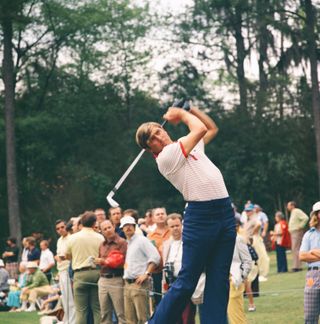
True grit from Mike Reasor
In the 1974 Tallahassee Open, a little-known pro from Seattle called Mike Reasor made the cut with rounds of 73 and 71 to sit level par at the halfway point. The event was played at the same time as the PGA Tour’s Tournament of Champions, so few of the biggest names of the day were in Tallahassee. Thus, the event received little recognition at the time, but Reasor ensured it entered the history books.
After round two, while out horse riding, the animal took fright and sent Reasor into a tree. He hurt his leg and tore rib cartilage, plus muscles in his left arm. His left shoulder was also partly separated. Surely this meant a withdrawal from the tournament? No, because everyone who made the cut in the Tallahassee Open was exempt from qualifying for the following week’s Byron Nelson Classic, but only if they completed 72 holes.
Reasor went out in round three and played one handed, using just a five-iron and a putter. He went round in 123 (51-over-par.)
"You should have seen them laughing on the first tee. I stepped up with a 5-iron and barely got it to the ladies tees,” he said. He adopted the same technique in round four and improved with 114 (just 42-over-par.)
It was a brave effort but, sadly, Reasor’s injuries were too severe for him to compete in the Byron Nelson Classic. He never won on the PGA Tour but did manage 10 top-10 finishes. He died in 2002.
Homero Blancas Shoots 55
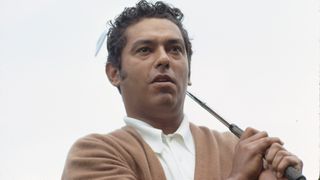
Homero Blancas
On 19 August 1962, at Premier Golf Club in the outskirts of Longview, Texas, a 24-year-old amateur called Homero Blancas played one of the most incredible rounds in golfing history.
With 18 holes left in the Premier Invitational, Blancas trailed his friend Fred Marti by five strokes. The significant lead would not be enough. The course at Premier (no longer in existence) was short – only just over 5,000 yards but, by all accounts, it was extremely tight and tricky with tiny greens and out-of-bounds everywhere. Before Blancas’ heroics, the course record was 60.
He opened with a birdie then knifed a chip at the second that hit the flag square on and dropped for eagle. He made five more birdies over the next seven holes and turned in eight-under-par 27.
On the back nine, the birdies continued to flow and the following gallery grew. Spectators commented on how relaxed Blancas looked and it wasn’t until the 17th, when 13-under-par for the round, he realised the enormity of what he was achieving. He faced a 45-foot birdie putt and hit it way too hard. But it struck the centre of the back of the cup, jumped inches into the air and dropped in. On the par-5 last, his drive veered well right but hit a tree and bounced back into the fairway. He made yet another birdie and signed for a 55. Blancas turned pro and went on to win four PGA Tour events.
Monumental Matchplay
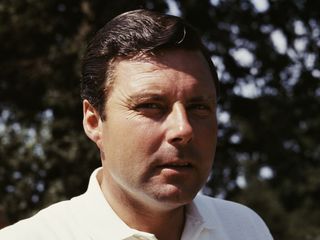
Peter Alliss - matchplay record holder
At Walton Heath, in the third round of the 1952 British Professional Matchplay championship, 1947 Open Champion Fred Daly faced Alan “Tiger” Poulton. The pair were tied through 18 holes so went on to sudden-death. The playoff was an epic. Repeatedly Poulton looked to have the match sewn up, only for Daly to hole a monster putt to keep his chances alive. Eventually, on the 12th extra hole, Daly drained another long effort, this time from 40 feet and for the win.
He went straight back out again and cruised past Peter Alliss by 6&5 in round four. The Irishman went all the way to the final where he defeated Flory van Donck from Belgium.
Daly and Poulton’s playoff stood as the longest until Peter Alliss and Harold Henning topped it in the same event in 1961. Henning might have won in regulation holes. He was one-up coming to the last, but a dog barked mid-way through his swing and he totally mis-hit his tee shot. They halved 12 extra holes in an impressive total of three under fours, before Henning finally took the match at the 31st.
Shot For Shot
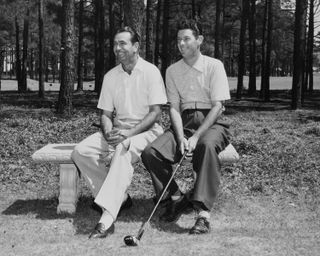
Lloyd Mangrum and Cary Middlecoff
After 72-holes of the 1949 Motor City Open in Detroit, Lloyd Mangrum and Cary Middlecoff were tied atop the leaderboard with scores of 273.
There was nothing particularly unusual about that, the tournament would be decided by a sudden-death playoff. But, after nine extra holes, the pair couldn’t be separated. Both had completed the nine in level par. When Middlecoff birdied the second extra hole, Mangrum matched him; when Mangrum bogeyed the eighth, so too did Middlecoff. Tired and aware of encroaching darkness, they agreed with officials to play two more holes and, if no winner emerged, they would share the title.
The 10th was halved, but it looked as though Mangrum might take it at the 11th – a par 3. His tee shot ended just 10 feet from the hole and Middlecoff found a tough lie in the rough, more than 15 yards from the flag. But he played a fantastic shot that came to rest just by the cup. Mangrum missed his birdie effort and both tapped in for par. Some 8,500 spectators watching the battle roared their approval as the pair shook hands.
Flitcroft’s Folly
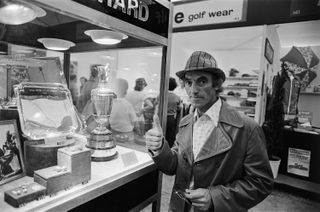
Maurice Flitcroft
A crane operator from Barrow in Furness, and formerly a Merchant Navy seaman and stunt high-diver, Maurice Flitcroft was no run-of-the-mill character. He took to golf late in life after withdrawing a book by Peter Alliss from his local library and quickly decided he fancied a crack at the big time.
He read about a Milwaukee postal sorter named Walter Danecki who had entered the 1965 Open Championship and scored 81-over-par in 36-hole qualifying. Flitcroft felt he could do better so obtained an entry form for the 1976 Championship. The 46-year-old considered the question of whether he was amateur or professional. With no handicap to declare, and despite never having completed a full 18 hole round, he stated, “professional.”
As such he received an invitation to play in qualifying at Formby. He almost missed his tee-time, skied his first tee-shot and went on to score a determined 121. Golf writer Pat Ward-Thomas described Flitcroft’s round as, “a blizzard of triple and quadruple bogeys, ruined by a solitary par.”
After some less than gentle prodding from an R&A Official, Flitcroft withdrew from the second round. He attempted to qualify on further occasions, often in disguise and posing under pseudonyms like Gene Pacecki, Gerald Hoppy and finally James Beau Jolley (pronounced Beaujolais,) but he never made it more than nine holes before being, “collared by the suits.”
His story has been retold in a fabulous book - The Phantom of The Open, now made into a film starring Mark Rylance.
The Greatest Comeback
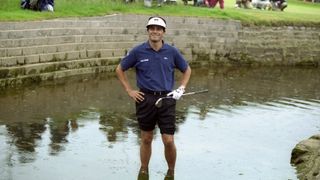
Jean Van de Velde loses the plot in the Barry Burn
As the final round of the 1999 Open Championship at Carnoustie got underway all eyes were on Frenchman Jean Van de Velde, who carried a five-stroke lead. The eyes were still very much on him at the end of the round as he paddled comically in the Barry Burn and squandered what remained of his advantage.
Earlier in the day Scotland’s Paul Lawrie, who’d begun the last 18 holes a full 10 shots behind Van de Velde, had carded a magnificent round of four-under-par 67. At the time it looked enough to earn him a fine finish, if not quite enough to catch the Frenchman.
Van de Velde stood on the 18th tee with a three-stroke lead, but played the testing par-4 in “Kamikaze” fashion, striking the grandstand, hacking from the rough into the burn then into the greenside bunker. He, miraculously, got up-and-down for a seven to tie Lawrie and Justin Leonard on a total of six-over-par.
In the resulting four-hole playoff, Lawrie birdied the last two holes to win it by three strokes. He’d beaten Van de Velde by 13 shots over 22 holes that Sunday and completed the biggest final round comeback in the history of Major championship golf.
Never Say Die
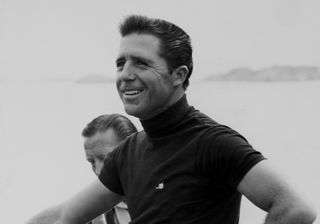
In 1965 Tony Lema was a serious threat to the dominance of the big three – Palmer, Nicklaus and Player – having won the Open Championship of 1964 and the World Series of Golf the same year.
In the 1965 Piccadilly World Matchplay at Wentworth, Lema squared up to Gary Player in the 36-hole semi-final. Player was keen to avenge a heavy defeat by Arnold Palmer at the same stage of the 1964 tournament and there was added spice in this match-up, as Slazenger had just dropped Player’s club endorsement contract and were negotiating with Lema.
The South African took the early lead and was one-up through 10. But Lema caught fire on the back nine and won seven straight holes to go into lunch six-up. When the American won the first hole of the afternoon round, the match looked all but over. Player was not done yet though. He birdied the 2nd and 3rd, then took the 10th, 11th, 13th and 16th holes. He saved par to half the 17th before winning the 18th to force extra holes. The diminutive South African won the 37th to take the match.
Despite being emotionally and physically drained, Player went out the following day and defeated Peter Thomson by 3&2 in the final.

Fergus is Golf Monthly's resident expert on the history of the game and has written extensively on that subject. He has also worked with Golf Monthly to produce a podcast series. Called 18 Majors: The Golf History Show it offers new and in-depth perspectives on some of the most important moments in golf's long history. You can find all the details about it here.
He is a golf obsessive and 1-handicapper. Growing up in the North East of Scotland, golf runs through his veins and his passion for the sport was bolstered during his time at St Andrews university studying history. He went on to earn a post graduate diploma from the London School of Journalism. Fergus has worked for Golf Monthly since 2004 and has written two books on the game; "Great Golf Debates" together with Jezz Ellwood of Golf Monthly and the history section of "The Ultimate Golf Book" together with Neil Tappin , also of Golf Monthly.
Fergus once shanked a ball from just over Granny Clark's Wynd on the 18th of the Old Course that struck the St Andrews Golf Club and rebounded into the Valley of Sin, from where he saved par. Who says there's no golfing god?
-
 Is There A Dress Code For Patrons At The Masters?
Is There A Dress Code For Patrons At The Masters?There are plenty of policies for patrons attending The Masters to be aware of, but is there a dress code?
By Mike Hall Published
-
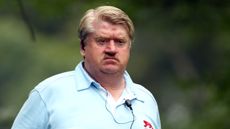 Amateur Legend Peter McEvoy Dies Aged 72
Amateur Legend Peter McEvoy Dies Aged 72Golf England has announced that the two-time Amateur Championship winner has passed away
By Mike Hall Published
-
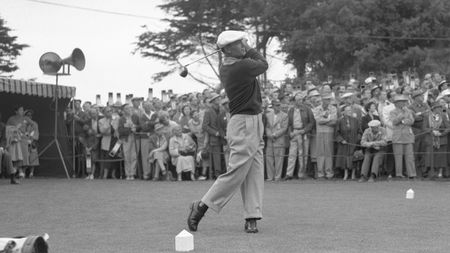 Quiz! How Much Do You Know About Ben Hogan?
Quiz! How Much Do You Know About Ben Hogan?Ben Hogan was one of the greatest golfers in the history of the game. He was a brilliant swinger of the club and is an icon of the sport. How much do you know about him? Test yourself here…
By Fergus Bisset Published
-
 Quiz! Golf In The Roaring 20s – How Much Do You Know About Walter Hagen and Bobby Jones?
Quiz! Golf In The Roaring 20s – How Much Do You Know About Walter Hagen and Bobby Jones?Walter Hagen and Bobby Jones were the standout star golfers of the 1920s. How much do you know about their golfing careers? Test yourself with this quiz
By Fergus Bisset Published
-
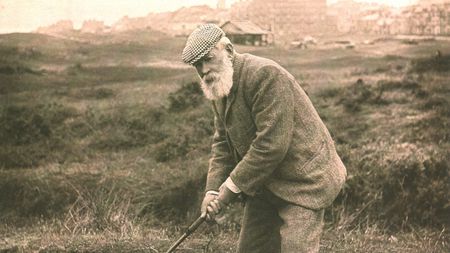 How Far Did Old Tom Morris Drive The Golf Ball?
How Far Did Old Tom Morris Drive The Golf Ball?Old Tom Morris became a golfing legend in the second half of the 19th century, but how far could he hit the golf ball?
By Fergus Bisset Published
-
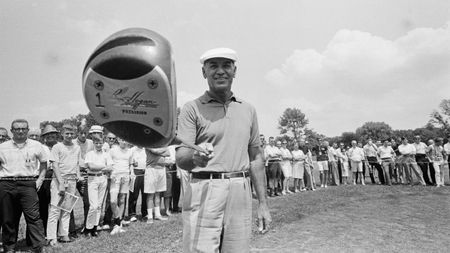 Injury, The Yips And No Form... How Ben Hogan Almost Pulled Off The Unthinkable In His Last Masters Appearance
Injury, The Yips And No Form... How Ben Hogan Almost Pulled Off The Unthinkable In His Last Masters AppearanceAt Augusta National in 1967, 54-year-old Ben Hogan rolled back the years with an incredible back nine of 30 in the third round of his final Masters
By Fergus Bisset Published
-
 How Would The Unstoppable Tiger Woods Of 2000 Get On Against Today's Best Golfers? We've Crunched The Numbers To Find Out...
How Would The Unstoppable Tiger Woods Of 2000 Get On Against Today's Best Golfers? We've Crunched The Numbers To Find Out...In 2000, Tiger Woods played golf that seemed, and was at times, out of this world. Was it the best anyone has ever played? How would it compare to the best of today?
By Fergus Bisset Published
-
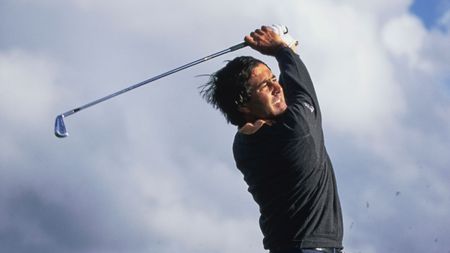 Seve Or Arnie, Who Did More For The Modern Pro Game?
Seve Or Arnie, Who Did More For The Modern Pro Game?Both men were inspirational, and both played a key role in the development of the professional game during the second half of the 20th century.
By Fergus Bisset Published
-
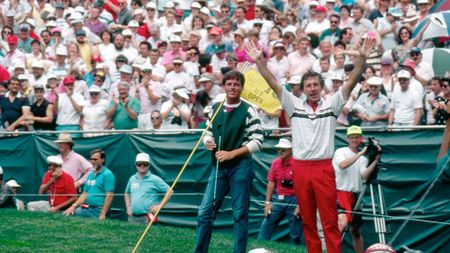 It Only Took 19 Play-Off Holes... The Amazing Story of Hale Irwin's Record-Breaking 1990 US Open Win
It Only Took 19 Play-Off Holes... The Amazing Story of Hale Irwin's Record-Breaking 1990 US Open WinHale Irwin came through a play-off to become the oldest ever US Open winner in an unlikely and highly memorable contest at Medinah
By Fergus Bisset Published
-
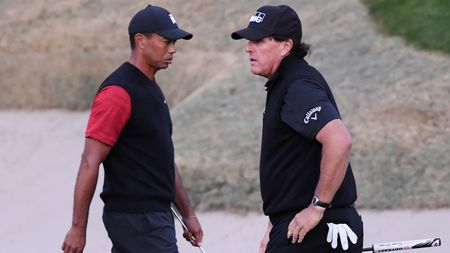 Woods Vs Mickelson – The Numbers Behind One Of Golf’s Great Rivalries
Woods Vs Mickelson – The Numbers Behind One Of Golf’s Great RivalriesWe take a look at the careers of two legends from the last 35 years of golf and compare some of the numbers behind their success.
By Fergus Bisset Published